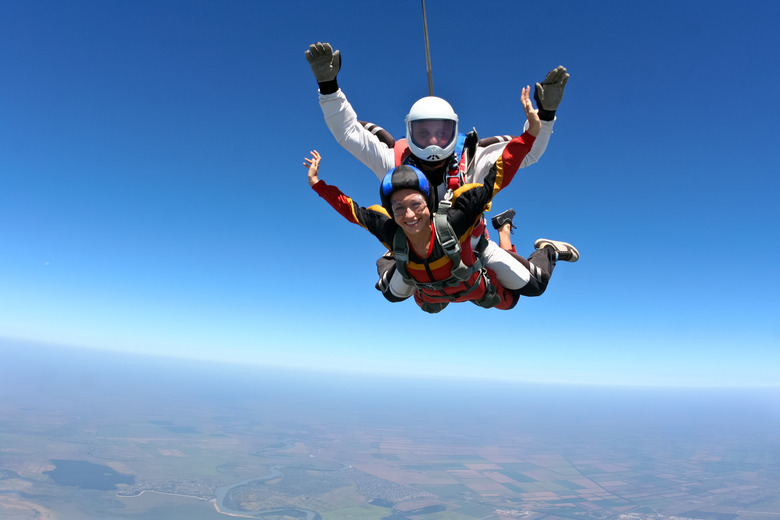How To Find Velocity From Mass & Height
Back in the Middle Ages, people believed that the heavier an object, the faster it would fall. In the 16th century, Italian scientist Galileo Galilei refuted this notion by dropping two metal cannonballs of different sizes from atop the Leaning Tower of Pisa. With the help of an assistant, he was able to prove that both objects fell at the same speed. Earth's mass is so large compared to your own that all objects near Earth's surface will experience the same acceleration — unless they encounter substantial air resistance. (A feather, for example, would clearly fall much slower than a cannonball.) To determine a falling object's velocity, all you need is its initial upward or downward velocity (if it was thrown up into the air, for example) and the length of time it's been falling.
Step 1
The force of gravity causes objects near Earth's surface to fall with constant acceleration of 9.8 meters per second squared unless air resistance is substantial. Keep in mind that the integral of acceleration over time will yield velocity.
Step 2
Multiply the length of time the object has been falling by 9.8 meters per second squared. For example, if an object has been in free-fall for 10 seconds, then it would be: 10 x 9.8 = 98 meters per second.
Step 3
Subtract your result from the object's initial upward velocity. For example, if the initial upward velocity is 50 meters per second, it would be: 50 – 98 = -48 meters per second. This answer is the object's velocity. A negative velocity means it is moving downward (falling), which is exactly what we would expect.
TL;DR (Too Long; Didn't Read)
Eventually, the object will hit the ground and go splat, at which point its velocity will be 0. You can determine when the object will hit the ground by using the following equation:
position = initial height + V T – 4.9 T squared
where T is the length of time elapsed and V is the initial upward velocity.
Cite This Article
MLA
Brennan, John. "How To Find Velocity From Mass & Height" sciencing.com, https://www.sciencing.com/velocity-mass-height-8317405/. 13 March 2018.
APA
Brennan, John. (2018, March 13). How To Find Velocity From Mass & Height. sciencing.com. Retrieved from https://www.sciencing.com/velocity-mass-height-8317405/
Chicago
Brennan, John. How To Find Velocity From Mass & Height last modified March 24, 2022. https://www.sciencing.com/velocity-mass-height-8317405/
